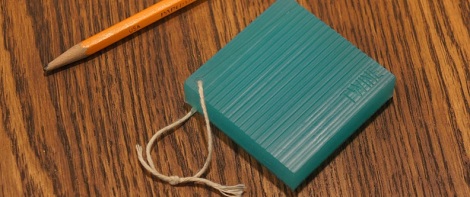
Putting microcontrollers in everything and tying appliances into the internet has become the DIYers’ bread and butter. There’s a ton of benefits from an Internet-enabled coffee maker, but actually building these projects takes a little bit of knowledge. Enter [Dave] and [John] with Twine – a little Internet enabled box that connects physical reality to the digital world.
The hardware inside a Twine is a small board that combines WiFi, an accelerometer and temperature sensor. The Twine is programmed ‘in the cloud’ with a simple if/then condition. A Twine will send you a text, email or tweet when the condition is met. For example, you could put a Twine on a door and program the accelerometer to text you when someone comes knocking.
Twine isn’t an entirely closed system; there’s a plug for additional sensors (moisture detection, for example), and the data from sensors can be pushed out to a server. You can pick up a twine for $100 from the Kickstarter; it’s a little rich for our blood, but we’re sure it’ll be a useful device.















Huhm. I wonder if a PLC “ladder logic” approach would make for a better programming interface here. Writing out rules seems awfully tedious.
Needs more IO. Then it could make a web controlled coffee machine quite easily. They say it has a breakout board, but doesn’t say if it’s inputs only or can do output as well.
And yes, I’d prefer a slightly bigger box (with more IO) and a smaller price tag.
whats the hardware underneath? …there seems no info _at all_ about the real stuff inside the box.
and for $100? now come on,lets just go buy a raspberry pi instead :D
Or 5.
Or 3.14
It’s great for doing a specific set of tasks. Giving you an alert if your basement is flooding is a good example of the kind of thing it’s good at.
However, its high cost, lack of openness, and dependence on their cloud platform make it less than ideal for your average DIY hacker. Also, you can’t send commands back to the Twine. It can send a text or HTTP request when sensor data changes, but that’s it. Powering the WIFI from two AAA batteries means that it can’t stay awake for any length of time. If you leave it on to respond to requests, the batteries will run out in a couple of hours.
I think the fact that it’s “not ideal for your average DIY hacker” is sort of the point… It’s meant to be accessible to non-DIY-hacker type people. Obviously there are “better” and certainly less expensive ways to do this yourself if you have the know-how, but this looks like a really fun way for someone with zero experience to get their feet wet. Might be a fun gift for a kid to automate their toys or room even.
looks like a chalkboard that was manufactured wrong, looks cool tho id like one….. now how can i use this to annoy people hummm…